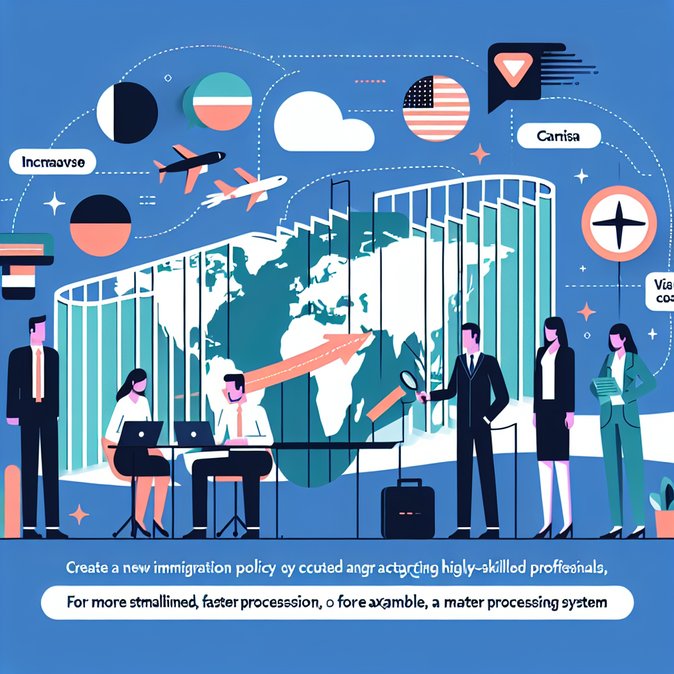
In a nationally-televised address on October 23, 2025, Prime Minister Mark Carney sketched the broad outlines of a new immigration strategy that will be tabled in the November federal budget. The plan seeks to “right-size” overall intake while aggressively courting highly-skilled workers whose U.S. prospects have dimmed following the Trump administration’s new US$100,000 H-1B petition fee. Carney said Ottawa will introduce a dedicated “Talent Strategy” that couples faster federal processing with expanded settlement funding for provinces prepared to absorb newcomers quickly.
Although details will arrive with the budget, officials confirm that the government will use existing pathways—Express Entry, the Global Talent Stream and a beefed-up International Mobility Program—to fast-track tech and STEM professionals. Carney also signalled that Canada may pilot targeted draws for U.S.–based H-1B holders similar to the one-time measure run in July 2023, but on a standing quarterly basis. Analysts note that this could intensify competition for talent across the Toronto-Waterloo corridor, Vancouver and Montreal, all of which already host major U.S. tech outposts.
Why the recalibration? Public support for high immigration levels has softened amid housing and cost-of-living pressures. Carney therefore framed the initiative as an economic productivity tool rather than a demographic imperative, promising that new arrivals will be aligned with labour-market absorption capacity backed by provincial skills-training funds. The Prime Minister also tied the plan to his broader fiscal theme of “spend less to invest more,” suggesting that Ottawa will redistribute existing departmental budgets rather than raise overall immigration spending.
For global-mobility managers, the speech is an early warning that 2026 admissions targets may shift away from family and humanitarian classes toward employer-driven economic streams. Companies with U.S. headquarters should prepare to leverage cross-border transfers, the Global Skills Strategy and the forthcoming Talent Strategy windows. Importantly, Carney reaffirmed that permanent-residence pathways will remain available for temporary workers who integrate into the labour market, providing longer-term assignment certainty.
In practical terms, employers should audit existing H-1B populations and identify candidates who could pivot to Canada under intra-company transfer, CUSMA Professional or forthcoming talent visas. They should also anticipate stricter compliance oversight as the government balances public confidence with economic needs. With Finance Minister François-Philippe Champagne set to table the budget on November 4, mobility teams have only a short window to align HR planning with Ottawa’s new direction.
Although details will arrive with the budget, officials confirm that the government will use existing pathways—Express Entry, the Global Talent Stream and a beefed-up International Mobility Program—to fast-track tech and STEM professionals. Carney also signalled that Canada may pilot targeted draws for U.S.–based H-1B holders similar to the one-time measure run in July 2023, but on a standing quarterly basis. Analysts note that this could intensify competition for talent across the Toronto-Waterloo corridor, Vancouver and Montreal, all of which already host major U.S. tech outposts.
Why the recalibration? Public support for high immigration levels has softened amid housing and cost-of-living pressures. Carney therefore framed the initiative as an economic productivity tool rather than a demographic imperative, promising that new arrivals will be aligned with labour-market absorption capacity backed by provincial skills-training funds. The Prime Minister also tied the plan to his broader fiscal theme of “spend less to invest more,” suggesting that Ottawa will redistribute existing departmental budgets rather than raise overall immigration spending.
For global-mobility managers, the speech is an early warning that 2026 admissions targets may shift away from family and humanitarian classes toward employer-driven economic streams. Companies with U.S. headquarters should prepare to leverage cross-border transfers, the Global Skills Strategy and the forthcoming Talent Strategy windows. Importantly, Carney reaffirmed that permanent-residence pathways will remain available for temporary workers who integrate into the labour market, providing longer-term assignment certainty.
In practical terms, employers should audit existing H-1B populations and identify candidates who could pivot to Canada under intra-company transfer, CUSMA Professional or forthcoming talent visas. They should also anticipate stricter compliance oversight as the government balances public confidence with economic needs. With Finance Minister François-Philippe Champagne set to table the budget on November 4, mobility teams have only a short window to align HR planning with Ottawa’s new direction.








